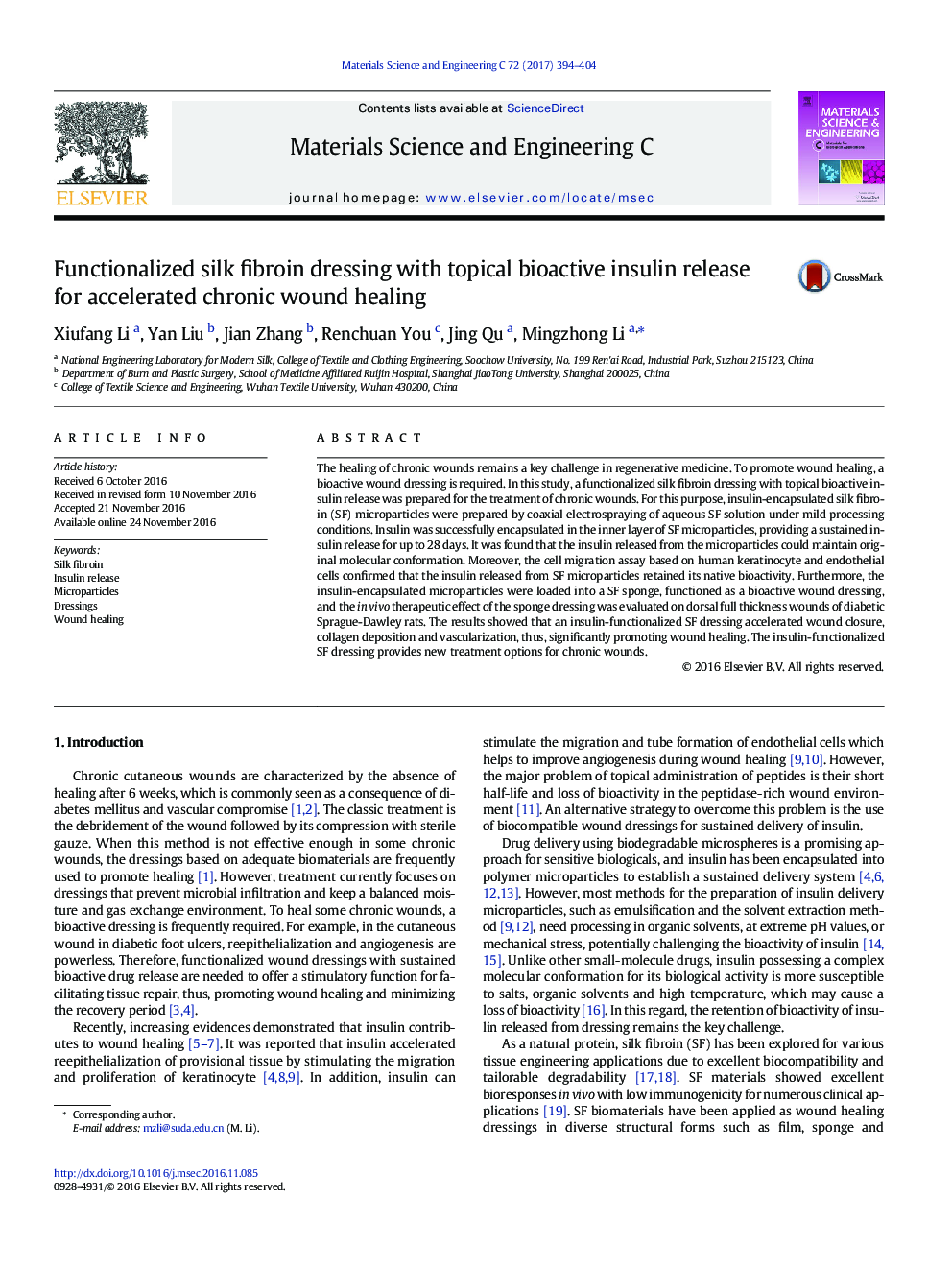| کد مقاله | کد نشریه | سال انتشار | مقاله انگلیسی | نسخه تمام متن |
|---|---|---|---|---|
| 5435218 | 1509149 | 2017 | 11 صفحه PDF | دانلود رایگان |
- Insulin-encapsulated SF microparticles were prepared by coaxial electrospraying.
- SF microparticles provided a sustained release of bioactive insulin.
- SF dressing with insulin release promoted cell migration and wound healing.
- Insulin-functionalized dressings provide new treatment options for chronic wounds.
The healing of chronic wounds remains a key challenge in regenerative medicine. To promote wound healing, a bioactive wound dressing is required. In this study, a functionalized silk fibroin dressing with topical bioactive insulin release was prepared for the treatment of chronic wounds. For this purpose, insulin-encapsulated silk fibroin (SF) microparticles were prepared by coaxial electrospraying of aqueous SF solution under mild processing conditions. Insulin was successfully encapsulated in the inner layer of SF microparticles, providing a sustained insulin release for up to 28Â days. It was found that the insulin released from the microparticles could maintain original molecular conformation. Moreover, the cell migration assay based on human keratinocyte and endothelial cells confirmed that the insulin released from SF microparticles retained its native bioactivity. Furthermore, the insulin-encapsulated microparticles were loaded into a SF sponge, functioned as a bioactive wound dressing, and the in vivo therapeutic effect of the sponge dressing was evaluated on dorsal full thickness wounds of diabetic Sprague-Dawley rats. The results showed that an insulin-functionalized SF dressing accelerated wound closure, collagen deposition and vascularization, thus, significantly promoting wound healing. The insulin-functionalized SF dressing provides new treatment options for chronic wounds.
Journal: Materials Science and Engineering: C - Volume 72, 1 March 2017, Pages 394-404
